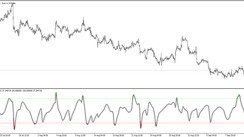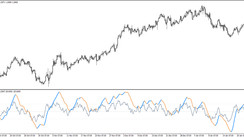Introduction to Funding Currency: Understanding the Essentials
In the intricate labyrinth of the financial world, a funding currency emerges as a cornerstone in currency carry trade transactions. What fundamentally characterizes a funding currency is its intriguingly low interest rate, making it a stark contrast to the high-yielding asset currency.
Investors with a flair for nuanced trading often adopt a strategy where they short the funding currency while taking a long position on the asset currency, which is blessed with a higher interest rate. This captivating interplay leads them to a path where they benefit from the net positive interest rates, reaping daily interest like a farmer harvesting golden crops.
Key Insights: A Glimpse into the Core
- Funding currency is a nuanced concept, involving borrowing money in one currency to purchase another, weaving a complex web of financial strategy.
- It typically has the allure of a low interest rate, and thus becomes an ideal candidate for financing the purchase of a high-yielding asset currency.
- The currency carry trade strategy is an elegant dance attempting to leverage the difference between the interest rates of two currencies. This difference can often blossom into something substantial, particularly if a trader uses a high degree of leverage, akin to a master artist wielding a fine brush.
How Funding Currency Functions: The Dynamics of Trading
Historically, the Japanese yen has enjoyed an esteemed status as a favorite among forex traders as a funding currency. This reputation owes itself to Japan's uniquely low interest rates. In this exotic dance, traders often borrow the Japanese yen to acquire currencies such as the Australian dollar or New Zealand dollar, which flaunt higher interest rates. Other luminaries in the funding currency hall of fame include the Swiss franc, and on rare occasions, the U.S. dollar.
Market Trends: Waves of Change
- During the golden times of optimism and swelling equity prices, funding currencies may shy away, performing poorly as investors indulge in more risk.
- Conversely, during the stormy weather of financial crises, funding currencies transform into safe-haven assets, attracting investors like a beacon in the dark.
Funding Currencies and Monetary Policy: The Tug of War
Central banks, those titans of monetary control, of funding currencies like the Japanese yen, often engage in aggressive and ambitious monetary stimulus, sculpting the landscape with low interest rates. The Bank of Japan, for instance, has forged a long-standing policy of low interest rates, a tapestry that began to unravel since the early 1990s following a bubble burst in asset price.
The Swiss franc stands as another enchanting example, with the Swiss National Bank playing the delicate game of suppressing interest rates to prevent the currency from ascending too dramatically against the euro. This delicate balancing act between currencies is akin to a well-choreographed ballet, where every move has profound implications.
The World of Currency Carry Trade: A Theater of Strategy
In the bustling marketplace of global finance, funding currencies are the lifeblood that drives the currency carry trade, one of the most enthralling strategies in forex. This grand strategy, with billions in cross-border loans flickering like stars in the night sky, has been poetically likened to picking up pennies in front of a steamroller. Traders often muster tremendous leverage, amplifying their small profit margins with the finesse of alchemists turning metal into gold.
Popular Trades: The Alluring Dance
- Currency pairs like Australian dollar/Japanese yen and New Zealand dollar/Japanese yen have been the stars of this financial theater, their high-interest rate spreads dazzling the spectators.
- With the Federal Reserve striking the chords of interest rates at the beginning of 2022, the U.S. Dollar emerged from the shadows, becoming more appealing as an asset currency, a metamorphosis that sent ripples through the market.
Risks and Warnings: The Shadows Behind the Glamour
Behind the enticing dance of the carry trade lies the lurking shadow of risks. The most piercing risk is the uncertainty of exchange rates. If the exchange rate falls unfavorably, like a twist in a thrilling novel, a trader may find their fortune reversing, losing money. This danger is exacerbated as these transactions are usually cloaked in heavy leverage, so even a gentle whisper of movement in exchange rates can trigger a tempest of losses.
Cautionary Tales of Funding Currency: Legends and Lessons
The tales of funding currency are rich and textured, filled with both triumph and tragedy. The Japanese yen was a golden child in the world of carry trade currency in the early 2000s, but its fortunes were not to last. With global financial market crashes in 2008, the yen carry trade crumbled like a castle of sand.
The Swiss franc tells another riveting tale, with the Swiss National Bank playing a game of chess, keeping interest rates low and then unexpectedly dropping the peg to the euro in 2015, causing chaos in the markets, akin to a thunderbolt in a clear sky.
Currency Carry Trade: An Illustrative Example
Allow your imagination to wander into the realm of a currency carry trade, with a trader observing rates in Japan at 0.5 percent, and in the United States at 4 percent. Like a skilled magician, the trader can borrow yen, transform them into dollars, invest in a U.S. security, and aim for a profit that blooms to 3.5 percent. If fate smiles, this profit can be realized, but if the winds change, exchange rates can lead to a loss, a twist in the tale that keeps the audience at the edge of their seats.
Calculating Profits: The Numbers Behind the Magic
- Profit = $452,173.91 - $436,956.52 = $15,217.39, a figure that unfolds exactly to the expected amount of 3.5%.
- If the exchange rate sways against the yen, the trader's profit blossoms; if the yen strengthens, the trader might find themselves in a garden of thorns, earning less or even facing a loss.





